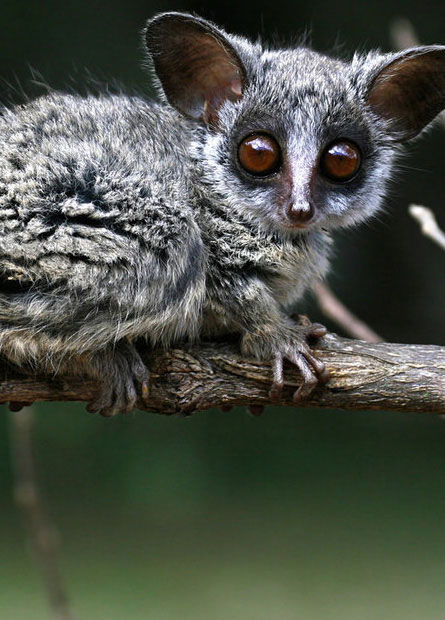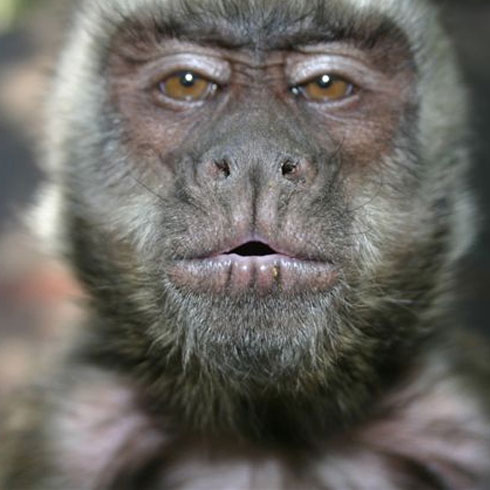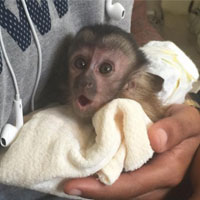Many folks expect to see bushbabies bouncing around when they arrive at our sanctuary. However, because we have created a natural and wild environment, these little creatures cannot be seen until sunset (about 7-8pm in summer, and 4:45– 6pm in winter).
Physical Characteristics:
Bushbabies are some of the smallest prosimian species. Tail included, they measure only 37cm in length and weight about 150g fully grown. Their large, orange-brown eyes allow them to see very well in the dark. If humans had a similar skull structure, our eyes would be the size of soccer balls! Their fur is a light grey with a partly yellow stomach and a white stripe down the nose. Owing to their nocturnal nature, Bushbabies are virtually inactive until sunset, when they emerge to hunt for insects. When a bushbaby jumps from branch to branch, it wipes its hands on its genitals with urine, so as to facilitate grip. This is a very quick process, and can really only be captured on slow-motion film or photographs.
Habitat:
Bushbabies mainly live in sub-saharan Africa, but not as far south as the Western Cape. Semi-arid regions such as savannah or scrub forest are preferred.
Diet:
Beetles, grasshoppers, scorpions, small reptiles, moths and butterflies. Bushbabies can also be seen gouging acacia tree gum. Their lower jaw juts forward to scrape the sap from the trees. Because our bushbabies are in a “captive” environment, they tend to eat a variety of fruit (particularly bananas) that we give to them on a regular basis. In the wild, galago maholi is generally not a fruit-eater.
Life Cycle:
Bushbabies typically give birth to one offspring at a time. The gestation period is a little over four months. Infants are carried in their mother’s mouth for the first month after birth, thereafter clinging to her back until being completely independent at two to five months old.




 Conservation in Southern Africa is rapidly becoming unsustainable without the active involvement of the community, especially the younger, more active generation. The Bushbabies Monkey Sanctuary and The Elephant Sanctuary group strongly believe that we have to get the younger members of communities involved to instill a passion for the environment and wildlife in them through education.
Conservation in Southern Africa is rapidly becoming unsustainable without the active involvement of the community, especially the younger, more active generation. The Bushbabies Monkey Sanctuary and The Elephant Sanctuary group strongly believe that we have to get the younger members of communities involved to instill a passion for the environment and wildlife in them through education. I'll introduce you to Joyce, for example. A young female capuchin, she was rather pampered with child-like paraphernalia; a dress and a small hat around her head. Cute, indeed. She had been with her "foster" family since only two months old, bought straight from a breeder. The couple who owned her did not have children, and so decided to substitute the missing link with a primate, albeit a bit smaller...and with sharper teeth.
I'll introduce you to Joyce, for example. A young female capuchin, she was rather pampered with child-like paraphernalia; a dress and a small hat around her head. Cute, indeed. She had been with her "foster" family since only two months old, bought straight from a breeder. The couple who owned her did not have children, and so decided to substitute the missing link with a primate, albeit a bit smaller...and with sharper teeth.



